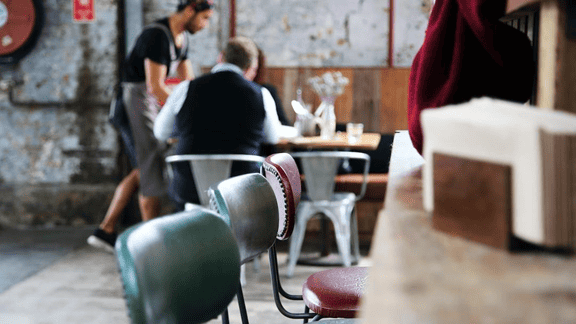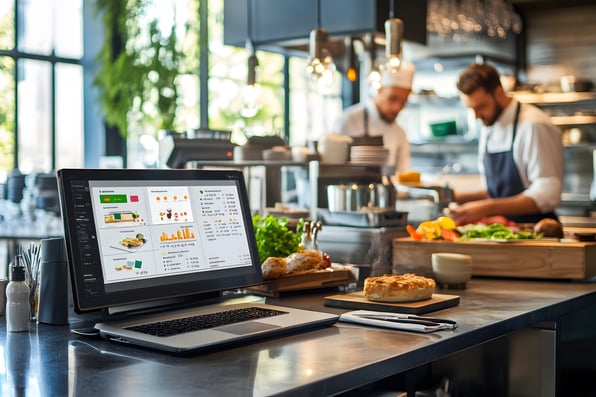How To Incorporate POS into Senior Living Dining Services

With the advent of technology, the assisted living industry has undergone a huge transformation that completely changed how it operates. One such addition to the technology for assisted living communities is the point-of-sale (POS) system, which can be applied to food and nutrition services to provide a higher quality of living and improve dining services.
Read on to learn about how to incorporate POS into senior living dining services to boost staff efficiency and enhance the overall dining experience at senior living communities.
The Role of Dining in Senior Living Communities
Unlike restaurants, dining rooms in senior living communities receive more or less the same customers. Because EVERYONE is a regular, it’s imperative to keep track of their dietary preferences, restrictions, and nutritional needs, particularly when they have special requirements and sensitive digestive abilities.
Assess Your Senior Living Community's Dining Needs
It’s critical to understand the dining requirements of residents and the care-related concerns of their families. That’s why a POS system is so important for senior living — when implemented correctly, it can provide more choices to residents, make staff’s life easier, and even integrate with a community’s EHR to ensure dietary restrictions are met.
With the use of the POS system interface, residents can have access to the day’s menu from the comfort of their homes, pre-order their preferred meals, opt for delivery or a dining room reservation, and even reserve meal times for themselves and their guests.
This system can also let communities set up meal cycles and easy-to-use payment models that align with their community members’ needs while ensuring they capture the correct revenue for their services.
Select the Right POS System for Your Community
When selecting the most appropriate POS system, senior living communities need to consider a number of factors.
First is the dining strategy
- Does the rent completely cover meals?
- Are meals sold only to residents or also to employees, visitors, and a wide variety of people?
- Are there other services like a spa or gift shop?
Next comes how the payments and processing of these transactions should be handled. Senior living communities need to consider whether they want to provide credit card and gift certificate options and whether they need assistance with the invoicing processes. A few other things to consider:
- How to handle payments most efficiently
- How to calculate and assess profits
- What tax rules (if any) to consider
- What revenue streams exist or can be created (like delivery fees or pop-up bistros)
- Does the sales data automatically flow into the billing and invoicing tools?
Finally, communities should plan how they are going to manage their staffing needs. Here, they may need to consider things like improving customer service, documenting labor requirements, and optimizing services based on their residents’ dietary preferences.
Once they’ve decided, bringing in the most suitable POS can help them care for their residents
How the Right POS Can Streamline Development
An efficient and versatile senior living dining POS comes with a range of features that can help communities integrate assisted living technologies to bring about an elite food service experience. These include:
- Improving order efficiency
- Recording resident information, preferences, and participation in meal plans
- Creating personalized meal plans to enhance resident experiences
- Monitoring the residents’ nutritional and dietary requirements and preventing allergies or other food-related mishaps
- Sharing relevant personal information and regular dietary reports with the staff and family members
- Tracking Inventory
- Preparing balance reports as well as accounts data
- Analyzing sales trends for optimizing meal plans
With the help of these features and digital tracking, communities can improve order accuracy and reporting efficiency to ensure smooth operations and prevent revenue leakage due to incorrect or misplaced orders, long wait times, and inefficient data and delivery practices.
Optimize the POS System for a Positive Dining Experience
The POS system can be used in various locations, like dining rooms, snack bars, coffee stations, gift shops, food carts, employee or visitor cafeterias, and customized catering events.
It can boost resident satisfaction by saving time, recording a resident’s preferences, and bringing a personal touch to all dining experiences. For example, if a resident’s favorite food is about to run out, they can be alerted in time. In fact, to assist customers with covid-19 restrictions in 2020, eMenuCHOICE added a reservations feature to boost customers’ efforts to reopen communal dining. This feature allows residents to:
- Book a reservation in their name for each meal period
- Be notified of seating times and limited capacities to prevent overcrowding
- Set start times and meal durations for each reservation
- Be seated in a particular dining room
- Add, combine, change, or delete reservations
- Receive an overview of all reservations by day and meal
Monitor and Enhance the Resident Dining Experience
At the end of the day, the main goal remains to boost the resident’s dining experience, and this can be primarily accomplished in two ways.
Gathering Feedback From Residents and Staff
The POS system can enable communication between the kitchen staff and residents. This can help the staff offer suitable suggestions to the residents based on their preferences and dietary recommendations, thus promoting connected living and ensuring exceptional service.
The staff can also pinpoint areas of improvement that take into account resident feedback regarding the food and delivery practices. Implementing changes based on resident opinions can initiate a positive feedback loop, boost the residents' living power, and make them feel heard and appreciated.
Adapting Menus and Services Based on Resident Needs
With the POS system, staff can access the resident’s personalized care data and provide a customized menu based on the resident’s requirements and preferences. Dietary filters and allergy alerts can minimize the margin of human error and ensure resident safety at all times.
Even the nutrition levels of the residents can be taken into account to ascertain that all meals provide balanced nutrition to all residents based on their individual needs. This can prevent food waste and enhance the quality of food and nutrition services being provided.
Elevate Senior Living Dining Services With POS
The awarding-winning POS application by eMenuCHOICE offers simple, quick, and easily accessible software solutions to all senior care communities’ dining needs. Get in touch today to learn more about our customizable and adaptable cloud-based system for assisted or independent living spaces, campuses, and skilled nursing communities.



